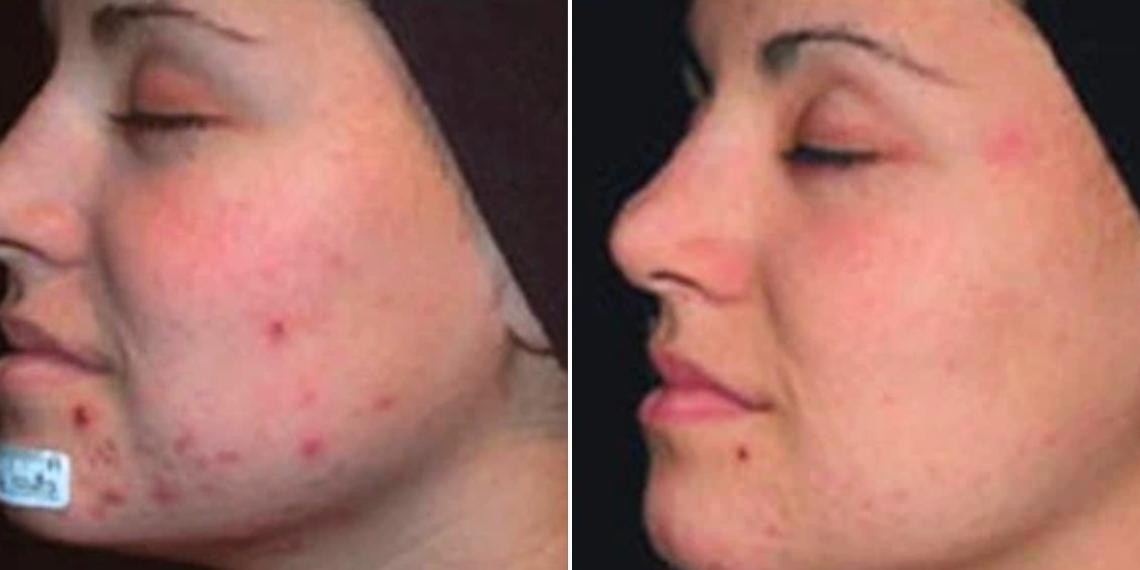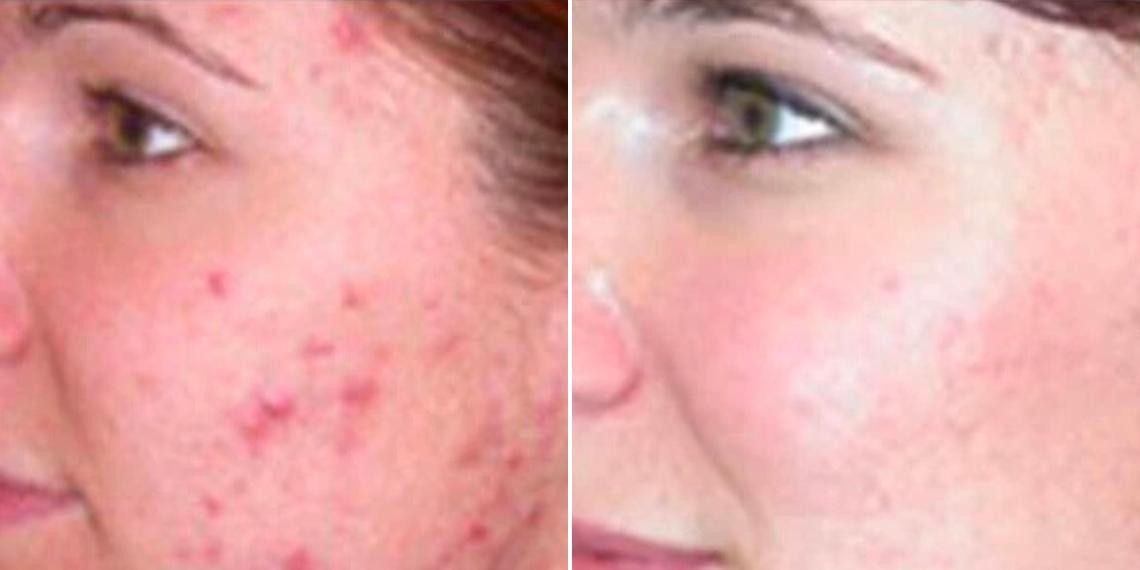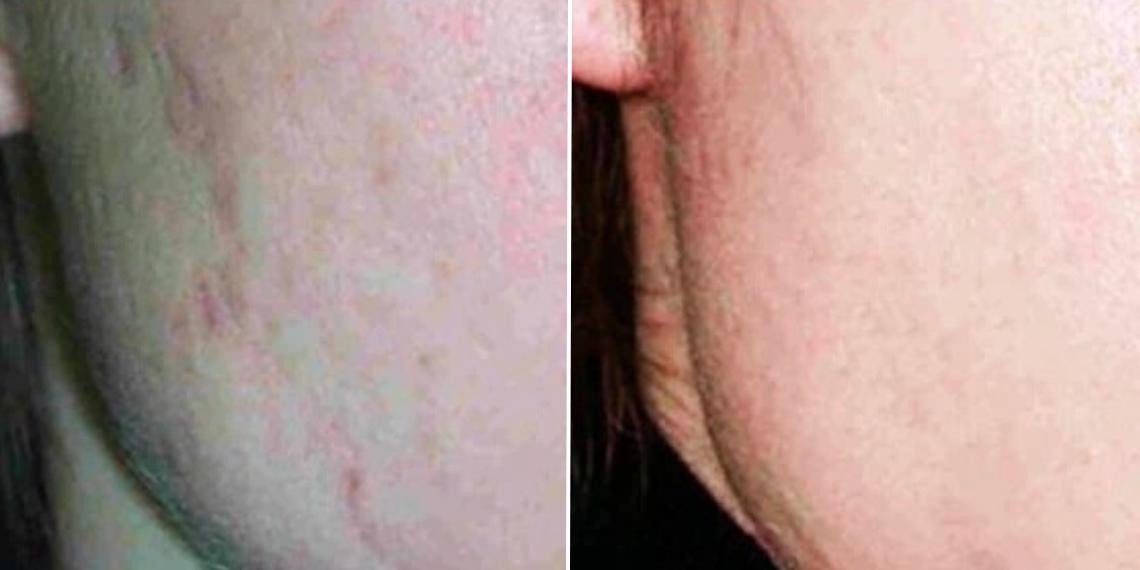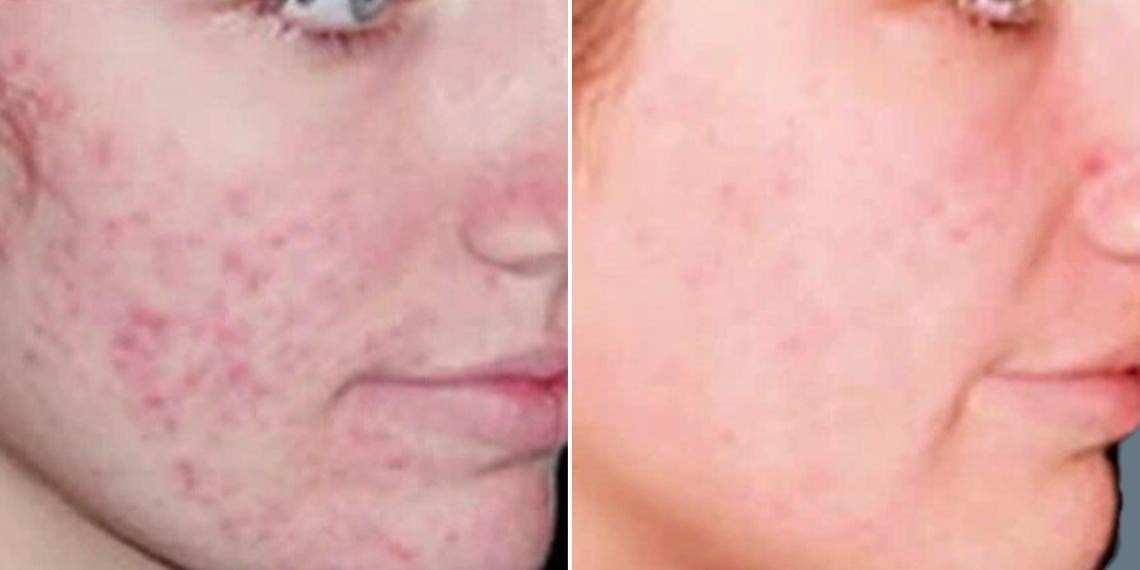- Liposuction
- Buttocks
- Breasts
- Non-surgical
- Face & Neck
SEE ALLAcne Treatment Before & After
CLOSE* Results may vary from patient to patient. ** All ‘after’ images are taken 2-4 weeks post treatment.Photodynamic Therapy Acne Treatment
Acne is a skin condition that forms when sebum (oil produced by the skin) gets trapped within the pores, creating bacteria. In some cases, acne may be treated using Photodynamic Therapy (PDT), which causes the destruction of oil glands that cause acne spots.Comprehensive care. Highly trained and qualified teamConvenient locations. Multiple clinics to choose fromEnquire about this treatment
Prefer to talk? Call 1300 138 797THE RESULTS
*Results may vary from patient to patient.
**All photos are of patients from Cosmos Clinic, and all ‘after’ images are taken 6 weeks post operation.THE TREATMENT
A multi-modal approach to treating active acne
Photodynamic Therapy (PDT) for Acne Treatment
Photodynamic Therapy (PDT) is a medical procedure that may help manage acne by targeting oil glands and bacteria in the skin. This process uses a substance called Aminolevulinic Acid (ALA), which is applied to the skin and then activated by a light source such as Omnilux. For some individuals, this treatment can provide an alternative to oral acne treatments, like antibiotics or isotretinoin.
How PDT Works
PDT replicates a natural process observed in sunlight exposure, where the activation of ALA leads to the destruction of bacteria and blocked oil glands. In PDT, the skin is prepared with microdermabrasion and acetone to remove surface layers of dead skin. Then, ALA cream is applied for 15 minutes to one hour, depending on the desired effect and downtime availability.
After the ALA application, the skin is exposed to light for about 20 minutes, during which patients may feel mild tingling in the treated area. Treatments are typically spaced 2–4 weeks apart, with most patients requiring 2–4 sessions for the best outcomes. Longer application times of ALA may result in increased downtime but can lead to more noticeable results.
Potential Results of PDT for Acne
- Approximately 30% of patients may see improvement after one treatment.
- Improvement increases to 60% after two treatments.
- Up to 90% of patients may experience improvement after three treatments.
Note: Results vary from person to person.
PDT may be considered for individuals with active acne who have not responded to other treatments, such as antibiotics or oral medications. This treatment is also an option for individuals with darker skin types, as the risk of hyperpigmentation is low when properly managed. Any pigmentation changes that occur can typically resolve with appropriate care within 3–4 months.
Cost of PDT Treatment
- PDT treatment prices vary depending on the size of the area to be treated
- Package discounts may be available for multiple sessions.
- Initial consultation fees apply
Additional Acne Treatments
Acne is often managed with a combination of treatments. PDT can be part of a broader approach, which may include:
- Omnilux Treatment: Targets acne-causing bacteria with light therapy.
- Peels and Microdermabrasion: Removes dead skin cells to help prevent blockages.
- Skincare Products: Ingredients like Vitamin A, Benzoyl Peroxide, and Alpha Hydroxy Acids may support acne-prone skin.
Consultation and Treatment
Before starting PDT or any acne treatment, a consultation with a healthcare professional is essential. During this consultation, the doctor will assess your skin and recommend the most suitable options for your needs. Treatments are available at Cosmos Clinic locations in Australia.
Locations available

POST TREATMENT INFORMATION
After the procedure, it is essential to minimise sun exposure, as sunlight can cause a burning or stinging sensation on the treated skin due to photosensitivity. Redness typically develops within a few hours post-treatment and can persist for 2 days to 2 weeks, depending on the intensity of the treatment. Higher-intensity treatments may yield more noticeable results but may also result in prolonged redness and sensitivity.
For many patients, active acne may show significant improvement within 2 weeks, with further enhancements observed over the following 8 to 10 weeks. With each session, improvements in skin tone and texture may become noticeable.
While some individuals may notice immediate changes in their skin, the extent and longevity of these changes can vary. Combining Photodynamic Therapy (PDT) with an effective daily skincare routine may enhance outcomes, but results will depend on individual factors. It is important to maintain realistic expectations regarding the results and their duration.
PDT has shown potential for lasting improvements in acne by targeting the oil glands responsible for acne development. Clinical studies have demonstrated significant reductions in oil production and gland size, leading to visible improvements in the skin over time.
* Results may vary from patient to patient
How does Photodynamic Therapy work?
Photodynamic Therapy (PDT) involves applying a photosensitising cream called Aminolevulinic Acid (ALA) to your skin which is then activated by a red or blue light. The activation of ALA, by light, leads to:
- Destruction of sebaceous glands: the blockage of these glands is responsible for causing acne
- Destruction of Propionibacterium Acnes (P. Acnes), the bacteria that triggers acne
- Progressive reduction in redness with every treatment. The redness and flushing caused by Rosacea and broken capillaries can be reduced by 80-90%
Are there any risks of complications with PDT?
There is no risk of scarring with PDT. Some patients have a lively response to PDT and experience marked redness of their skin which will resolve. Temporary swelling may occur within lips and around the eyes for a few days. Darker pigmented patches, called liver spots, can become temporarily darker and then peel off, leaving normal skin (usually occurring after 7 to 10 days).
LOCATIONS
See us for a consultation
Our experienced team of medical practitioners, doctors, and registered nurses is dedicated to providing personalised care with a focus on achieving lasting results.See LocationsSydney Double Bay
10 Henrietta Street, Double Bay NSW 2028
Opening Hours
Mon
8:30 am – 5:30 pm
Tue
8:30 am – 5:30 pm
Wed
8:30 am – 5:30 pm
Thu
8:30 am – 5:30 pm
Fri
8:30 am – 5:30 pm
Sat
8:30 am – 5:30 pm
Sun
Closed
Email
Phone
More information
Less information
Adelaide
163 Archer Street, North Adelaide SA 5006 Wheelchair access is at the rear of the building.
Opening Hours
Mon
9:00 am – 5:00 pm
Tue
9:00 am – 5:00 pm
Wed
9:00 am – 5:00 pm
Thu
9:00 am – 5:00 pm
Fri
9:00 am – 5:00 pm
Sat
Closed
Sun
Closed
Email
Phone
More information
Less information
Canberra
Suite 3 | Level C / 1 Broula Street, Bruce ACT 2617
Parking behind the building - please bring your ticket for validation.Opening Hours
Mon
9:00 am – 5:00 pm
Tue
9:00 am – 5:00 pm
Wed
9:00 am – 5:00 pm
Thu
9:00 am – 5:00 pm
Fri
9:00 am – 5:00 pm
Sat
Closed
Sun
Closed
Email
Phone
More information
Less information
Gold Coast
Level 2 / 127 Queen Street, Southport QLD 4215
Opening Hours
Mon
9:00 am – 5:00 pm
Tue
9:00 am – 5:00 pm
Wed
9:00 am – 5:00 pm
Thu
9:00 am – 5:00 pm
Fri
9:00 am – 5:00 pm
Sat
Closed
Sun
Closed
Email
Phone
More information
Less information
Ready to answer all of your questions. Call or ask us below
- Buttocks






